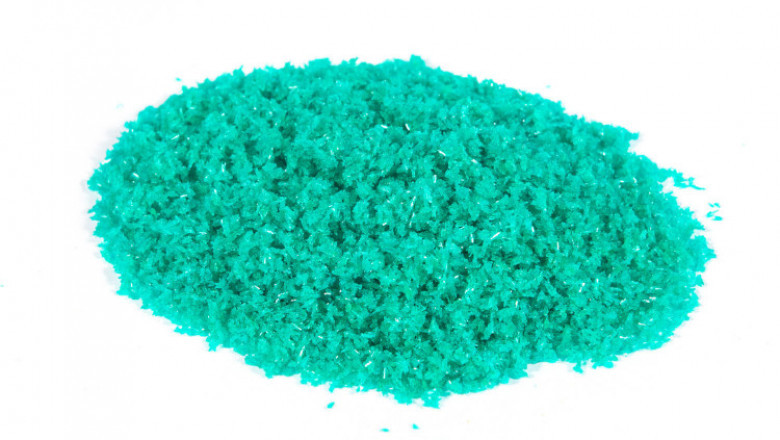views
Cupric chloride, also known as copper (II) chloride, is an inorganic compound with the chemical formula CuCl2.
Cupric chloride, also known as copper (II) chloride, is an inorganic compound with the chemical formula CuCl2. It is a yellow-orange solid that crystallizes in the orthorhombic system. It is a hygroscopic salt that readily absorbs moisture from the air. It dissolves easily in water to form blue solutions.
Physical and Chemical Properties
It has a high melting point of 272°C. It has a greenish-yellow color as a solid but forms blue aqueous solutions. This is due to the formation of coordination complexes between copper ions and water molecules. It is hygroscopic in nature and tends to absorb moisture from the air if exposed. It slowly hydrolyzes in water forming copper hydroxide and hydrochloric acid. The solutions show acidic behaviour due to the hydrolysis reaction.
CuCl2 (s) + xH2O (l) ⇌ Cu(H2O)x2+ (aq) + 2Cl- (aq)
Cu(H2O)x2+ (aq) + H2O (l) ⇌ Cu(OH)(H2O)x+ (aq) + H3O+ (aq)
The hydrated cupric chloride exists as octahedral complexes with water molecules coordinated to the central copper ion. The coordination number of copper is six in these complexes. It has a high solubility in organic solvents like acetone and ethanol as well. It forms coordination complexes with several ligands like ammonia.
Applications in Various Industries
Due to its versatile coordination chemistry, it finds wide applications in different industries:
- Manufacturing of Copper and Alloys: It is used for the recovery of copper through the solvent extraction process. It acts as a leach for extracting copper ores like chalcopyrite.
- Wood Preservative: Its solution has good biocidal properties and is used as wood preservative to prevent decay caused by fungi or insects. The treated wood has longer service life.
- Printing and Dyeing: It is used as a mordant in the printing and dyeing of fabrics like cotton and silk. It aids in better absorption of dyes by forming complexes with cellulose or proteins in fabrics.
- Catalyst: It is employed as a catalyst for various organic reactions like oxidation, reduction, hydration, alkylation etc. due to its ability to donate chlorine.
- Photography: In the past, Cupric Chloride was used as a toner in photographic developers to intensify the tone and contrast of black-and-white photographs.
- Construction: It acts as an accelerator in cement manufacturing by initiating the hydration of cement. Its solutions are also used for corrosion protection of steel reinforcements in concrete.
- Fungicide and Bactericide: Due to its biocidal properties, dilute solutions of cupric chloride are employed as fungicide and bactericide in agriculture to control fungal and bacterial infections in crops.
Health and Environmental Effects
While it has many industrial applications, some precautions need to be taken regarding its use:
- Toxicity: It is moderately toxic if ingested or inhaled. The dust or fumes can cause irritation to eyes, skin and respiratory tract on contact. Long term exposure may lead to copper accumulation in the liver and kidneys.
- Corrosiveness: As cupric chloride solutions are acidic in nature due to hydrolysis, they are corrosive to skin, eyes and mucous membranes on contact in concentrated form. Personal protective equipment must be used while handling it.
- Aquatic Toxicity: As copper is a heavy metal, elevated levels of it in aquatic environments can harm aquatic organisms and plants. It should not be discharged directly into water bodies without prior treatment.
- Waste Disposal: Leftover cupric chloride solutions and solids must be disposed off as chemical waste according to environmental regulations to prevent groundwater contamination. Spills need to be contained and cleaned appropriately.
With proper precautions regarding its handling, storage and disposal, it can continue to find wide applications in industry due to its unique properties and reactivity as a copper salt. More research is also being conducted to utilize its biocidal effects for other useful purposes.
cupric chloride is a versatile copper salt with applications spanning several industries like metal extraction, wood preservation, catalysis etc. It has interesting coordination chemistry owing to the ability of copper to form complexes. While the compound poses some health and environmental risks if not handled carefully, it will remain an important chemical compound for industrial applications in the future with adherence to safety standards. Continuous research can also help develop new uses for this salt.
Discover the Report for More Insights, Tailored to Your Language.
French German Italian Russian Japanese Chinese Korean Portuguese
Money Singh is a seasoned content writer with over four years of experience in the market research sector. Her expertise spans various industries, including food and beverages, biotechnology, chemical and materials, defense and aerospace, consumer goods, etc. (https://www.linkedin.com/in/money-singh-590844163)






















Comments
0 comment